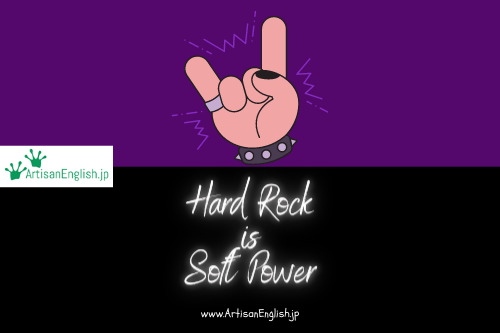
They’re all soft power.
YouTube / iTunes / Spotify / Radio Public / Pocket Casts / Google Podcasts / Breaker / Overcast
Listen to ArtisanEnglish.jp posts & lesson intros here.
WotD: Soft power
The United States often uses the threat of its massive military and economic power to get what it wants.
Everyone acknowledges this.
If you don’t, just ask the Russians.
However, the US knows how to use its soft power, too.
Look at Hollywood movies, rock ‘n’ roll, comic books and bubble gum.
In other words, it can also use its culture and economic power to portray the American dream.
A country uses its soft power or cultural and economic power and influence to convince other countries to do what it wants them to do.
Naturally, when soft power doesn’t work, most nations can resort to sabre-rattling or the use of military force.
China has done an outstanding job using the Panda as a soft power ambassador.
Panda diplomacy has served to portray a positive image of the country and as a way to indicate it has cordial relations with another country.
Yes, the panda magic is beginning to fade as China becomes more belligerent, but nothing lasts forever.
Japan, too, has accomplished a high level of success by exporting manga and anime culture abroad.
In the Before Times, much of Japan’s tourism industry was driven by soft power.
Of course, all that stopped when the borders were closed to tourists due to COVID-19 concerns.
In recent times, though, Korea has been the soft power guru.
It began with Korean dramas and escalated to popular music.
Does anyone remember doing the horse-riding dance while listening to Gangnam Style by Psy?
K-pop has done wonders to introduce, promote and popularize Korean and Korean culture worldwide.
Now, I don’t find a bunch of young Korean millennials jumping around on a stage as a reason to board a flight to Seoul.
Soft power is safe power.
It helps promote a country and achieve a goal.
Flesch-Kincaid Readability Test
This post is understandable by someone with at least an 8th-grade education (age 13 – 14).
On the Flesch-Kincaid reading-ease test, this post scores 61.
The easier a passage is to read, the higher the score on a scale of 0 – 100.

